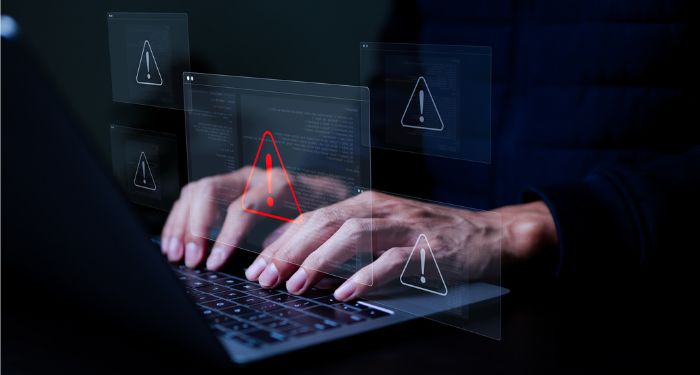Electronic Disclosures for Retirement Plans
 In an effort to reduce administrative expenses and make retirement plan disclosures more readily accessible and useful for America’s workers, the U.S. Department of Labor (DOL) announced a final rule on May 21, 2020, that will allow employers to communicate required retirement plan disclosures and other plan information electronically, rather than sending potentially large volumes of paper documents through the mail. The final rule, which establishes a voluntary safe harbor for electronic disclosures, is estimated to save retirement plan sponsors $3.2 billion over the next 10 years by eliminating significant materials, printing, and mailing costs associated with furnishing printed disclosures. The rule will also assist employers and the retirement plan industry in the short term as they face a number of economic and logistical challenges due to the COVID-19 National Emergency. Following are the key highlights of the final rule:
In an effort to reduce administrative expenses and make retirement plan disclosures more readily accessible and useful for America’s workers, the U.S. Department of Labor (DOL) announced a final rule on May 21, 2020, that will allow employers to communicate required retirement plan disclosures and other plan information electronically, rather than sending potentially large volumes of paper documents through the mail. The final rule, which establishes a voluntary safe harbor for electronic disclosures, is estimated to save retirement plan sponsors $3.2 billion over the next 10 years by eliminating significant materials, printing, and mailing costs associated with furnishing printed disclosures. The rule will also assist employers and the retirement plan industry in the short term as they face a number of economic and logistical challenges due to the COVID-19 National Emergency. Following are the key highlights of the final rule:
Scope:
- The safe harbor is limited to retirement plan disclosures (see list below) and does not include any document that must be furnished at the specific request of a participant or beneficiary.
- The safe harbor may only be used for “covered individuals.” To be a covered person, the individual must be entitled under ERISA to receive covered documents and must have a valid electronic address (e.g., e-mail address or smart phone number).
- The new safe harbor does not supersede the 2002 safe harbor; the 2002 safe harbor remains in place as another option for plan administrators.
Optional methods of electronic delivery:
- Website Posting – Plan administrators may post covered documents on a website if appropriate notification of internet availability is furnished to the electronic addresses of covered individuals.
- E-mail Delivery – Alternatively, plan administrators may send documents directly to the electronic addresses of covered individuals, with the covered documents either in the body of the e-mail or as an attachment to the e-mail.
Documents eligible for electronic delivery:
- Annual disclosure notices such as safe harbor, Qualified Default Investment Alternative (QDIA), fee disclosures, and automatic enrollment;
- Summary Plan Descriptions;
- Summaries of Material Modifications;
- Summary Annual Reports;
- Notices of blackout periods for participant investment direction;
- Notices relating to Qualified Domestic Relations Orders; and
- Individual benefit statements required by the Pension Protection Act.
Protections for covered individuals:
- Right to Paper – Covered individuals can request paper copies of specific documents, or globally opt out of electronic delivery at any time, at no cost.
- Initial Notification – The initial notification of electronic delivery must be on paper and must include the new electronic delivery method, the electronic address that will be used, and provide the right to opt out. This notice must be given before the plan may use the new safe harbor.
- Notifications of Internet Availability – Covered individuals must be furnished a notice of internet availability (NOIA) each time a new covered document is made available for review on the internet website.
- The final rule permits an annual NOIA to include information about multiple covered documents, instead of requiring plan sponsors to provide multiple NOIAs throughout the year.
- The NOIA must briefly describe or identify the covered document that is being posted online, include an address or hyperlink to the website, and inform the covered individuals of the right to request paper copies or to opt out of electronic delivery altogether.
- The NOIA must be concise, understandable, and contain only specified information.
- Website Retention – Covered documents must remain on an internet website until superseded by a subsequent version, but never for less than one year.
- System Check for Invalid Electronic Addresses – Plan administrators must have a system that will enable them to identify bounce backs or delivery attempts to covered individuals that have been returned as “undeliverable.” If a bounce back is received, the plan administrator must attempt to promptly cure the problem, or treat the participant as opting out of electronic delivery.
- System Check at Termination of Employment – When an individual terminates employment, the plan administrator must take steps to ensure the continued accuracy and operability of the individual’s employer-provided electronic address.
The new safe harbor rule was effective July 26, 2020. It is important to note that it is an additional option for electronic disclosure and does not replace the prior DOL e-disclosure rule that allowed for electronic delivery to employees who were “wired at work.” In addition, it is voluntary and only applies to retirement plans (and not employee welfare benefit plans, such as those providing group health or disability benefits).
For more information about McKonly & Asbury’s Employee Benefit Plan services, or for questions regarding this article, please contact Stephanie Kramer, Manager with McKonly & Asbury, at skramer@macpas.com.
About the Author

Steph joined McKonly & Asbury in 2016 and is currently a Manager in the firm’s Audit & Assurance Segment. Steph audits a broad spectrum of employee benefit plans, including 401(k), 403(b), retirement, profit sharing, health and… Read more



